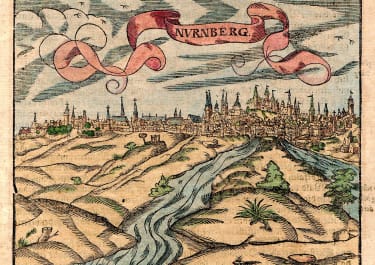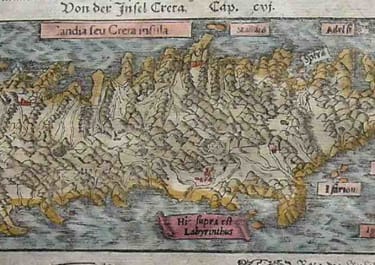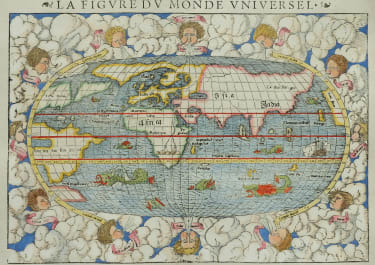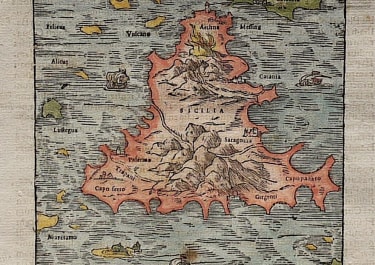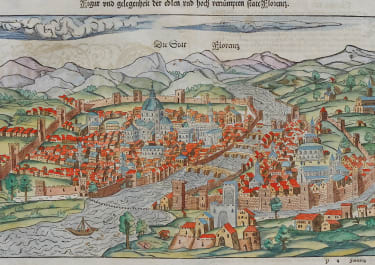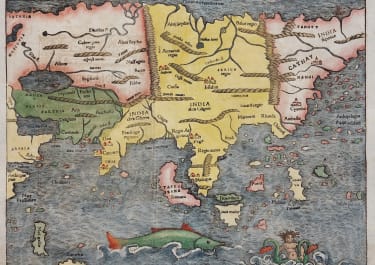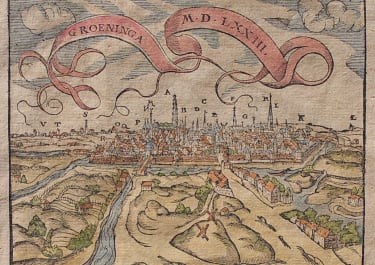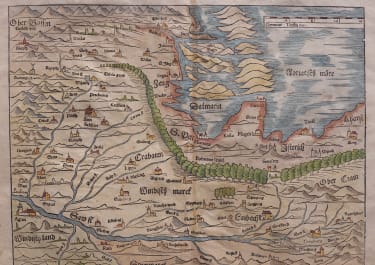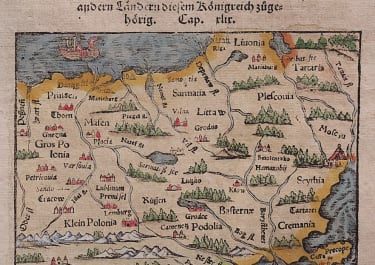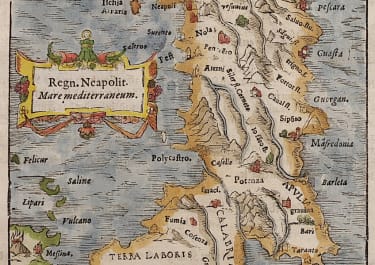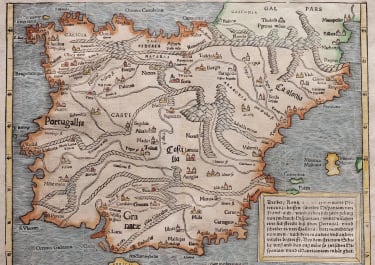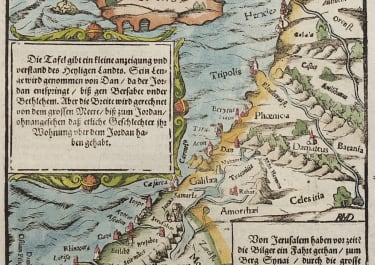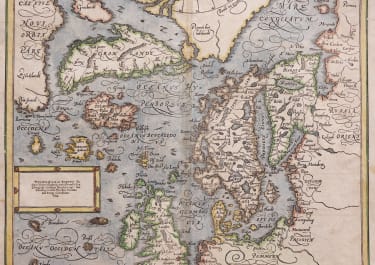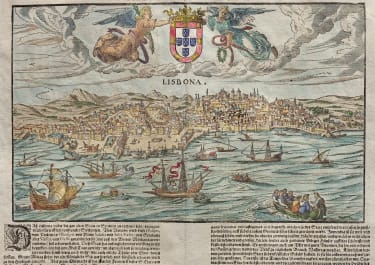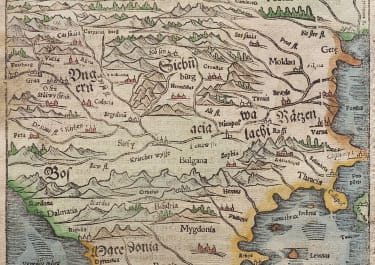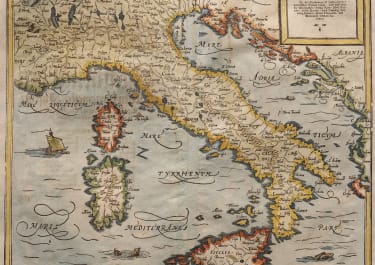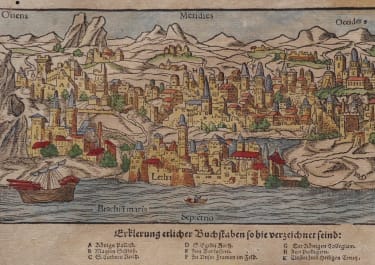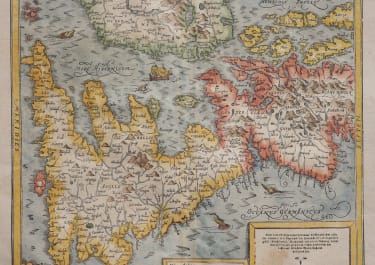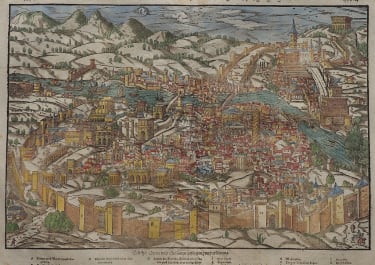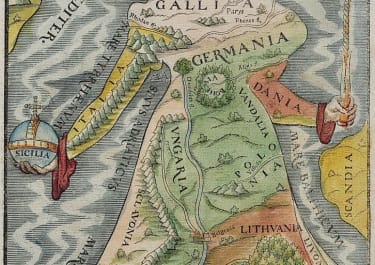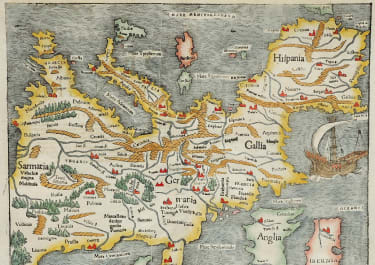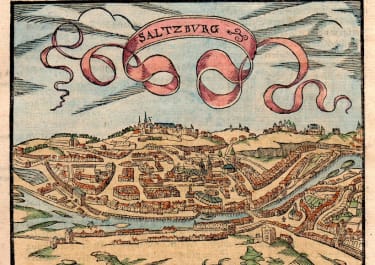MUNSTER ANGLIA DAS ENGELLAND MIT DEM ANSTOSSENDEN REICH SCHOTTLANDT
£950
Attractive very early map of England.
Good example of Sebastian Munster's map of the British Isles, one of the earliest separately printed maps of the British Isles and a landmark in the cartographic landmark in the history of British maps.
The map is oriented with East at the top and extends to Edinburg in the North, also showing the East Coast of Ireland. A key in the upper left corner shows the English and Latin names for 17 major place names in England.
The map includes the Royal Standard at the top center and the Scottish flag at the lower left.
Excellent hand colour . Good impression
Publication Munster's Cosmographia
References: Shirley (BI to 1650) 28.
code : M5261
Cartographer : Sebastian Munster
Date : 1550c Basel
Size : 26*34.5 cms sheet 32*40 cms
availability : Available
Price : £950
Originally a scholar studying Hebrew, Greek and mathematics, Sebastian Munster (1489-1552) eventually specialised in mathematical geography and cartography. It was this double ability - as a classicist and mathematician - that was to prove invaluable when Munster set himself to preparing new editions of Solinus’ “Memorabilia” and Mela’s “De Situ Orbis”, two classical descriptive geographies containing maps, and his own two greatest works, the “Geographia” and “Cosmographia”. These reflect the widespread interest in classical texts, which were being rediscovered in the fifteenth century, and being disseminated in the later fifteenth and sixteenth century, through the new medium of printing.
The “Geographia” was a translation of Ptolemy’s landmark geographical text, compiled in about 150 AD., illustrated with maps based on Ptolemy’s calculations, but also, in recognition of the increased geographical awareness, contains a section of modern maps. In the first edition of the “Geographia”, Munster included 27 ancient Ptolemaic maps and 21 modern maps, printed from woodblocks. Subsequent editions of the “Cosmographia” were to contain a vast number of maps and plans.
One consequence of Munster’s work was the impetus it gave to regional mapping of Germany, but Munster was also the first cartographer to produce a set of maps of the four continents on separate maps. Most importantly, through his books (the “Geographia” and “Cosmographia” alone ran to over forty editions in six languages), Munster was responsible for diffusing the most up-to-date geographical information throughout Europe.





